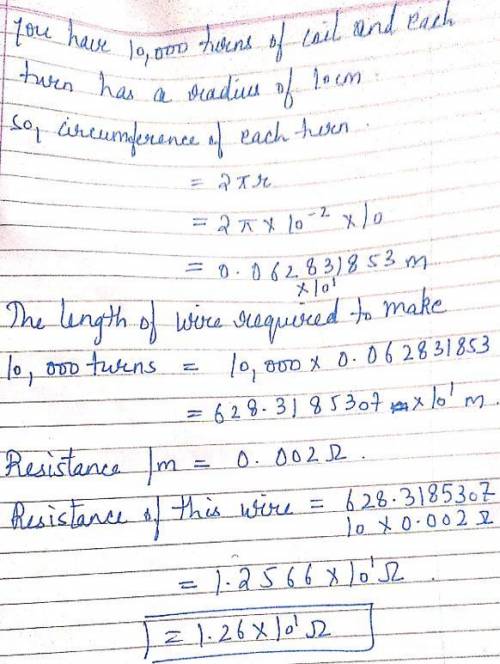
In lecture, you may have seen a video of a frog being levitated by an extremely strong magnetic field. It takes magnetic fields in the neighborhood of 12 Teslas to accomplish this. We've learned that we can make magnetic fields simply by passing currents through coils of wire, so let's find out what happens if we try to make a homemade magnetic levitator We're going to take lots of copper wire and wrap it into a coil. The bigger the coil is, the harder this project will be, so let's give it a radius of 10 cm, which is big enough to comfortably fit a frog but not unmanageable. Realistically, we're not going to be able to get more than 10,000 turns of the wire into one place, so let's take that to be our N. How much current will we need to pass through the wire to get the necessary magnetic field in the center of the coil? 1.91x102 A Opts You are correct. Submissions to practice problems are not permanently reco That's kind of a lot, but it's not necessarily a deal-breaker. A more important consideration will be the power dissipated in all that wire. That means we need to know the total resistance coil? of the wire. I can look up some information online and discover that 8-gauge copper wire has 0.002 Ohms of resistance for every meter of wire. What will be the total resistance of our 1.26x101 Ohm 0pts You are correct. Previous Tries Submissions to practice problems are not permanently recorded Now, regardless of what your numbers gave you, let's assume that in the first part you found a current of 600 A and in the second part you found a resistance of 13 Ohms. How much power will be dissipated by our coil? 4.68x106 w Opts You are correct. Submissions to practice problems are not permanently recorded

Answers: 3
Another question on Physics

Physics, 21.06.2019 16:20
A1,200 kg car is accelerated at 3.7 m/s2. what force was needed to produce this acceleration? a. 4,440 n b. 324.3 n c. 4,388 n d. 304.3 n
Answers: 2

Physics, 22.06.2019 14:40
14. a body is projected with velocity vi from a.at the same time another body is projectedvertically upwards from point b withvelocity v2 lies vertically below the highestpoint. both the bodies collide thenv2÷v1is
Answers: 1

Physics, 22.06.2019 19:40
It may seem strange that the selected velocity does not depend on either the mass or the charge of the particle. (for example, would the velocity of a neutral particle be selected by passage through this device? ) the explanation of this is that the mass and the charge control the resolution of the device--particles with the wrong velocity will be accelerated away from the straight line and will not pass through the exit slit. if the acceleration depends strongly on the velocity, then particles with just slightly wrong velocities will feel a substantial transverse acceleration and will not exit the selector. because the acc
Answers: 1

Physics, 23.06.2019 00:10
An electromagnetic wave with frequency 65.0 hz travels in aninsulating magnetic material that has dielectric constant 3.64 andrelative permeability 5.18 at this frequency. the electric fieldhas amplitude 7.20 \times 10^{ - 3} {\rm v}/{\rm m}. a. what is the speed of propagation of the wave? b.what is the wavelength of the wave? c.what is the amplitude of the magnetic field? d.what is the intensity of the wave?
Answers: 3
You know the right answer?
In lecture, you may have seen a video of a frog being levitated by an extremely strong magnetic fiel...
Questions


English, 19.05.2021 18:30

Mathematics, 19.05.2021 18:30



Mathematics, 19.05.2021 18:30


Mathematics, 19.05.2021 18:30

Mathematics, 19.05.2021 18:30

English, 19.05.2021 18:30


Mathematics, 19.05.2021 18:30

Mathematics, 19.05.2021 18:30



Mathematics, 19.05.2021 18:30



Mathematics, 19.05.2021 18:30




